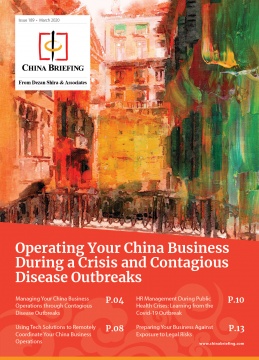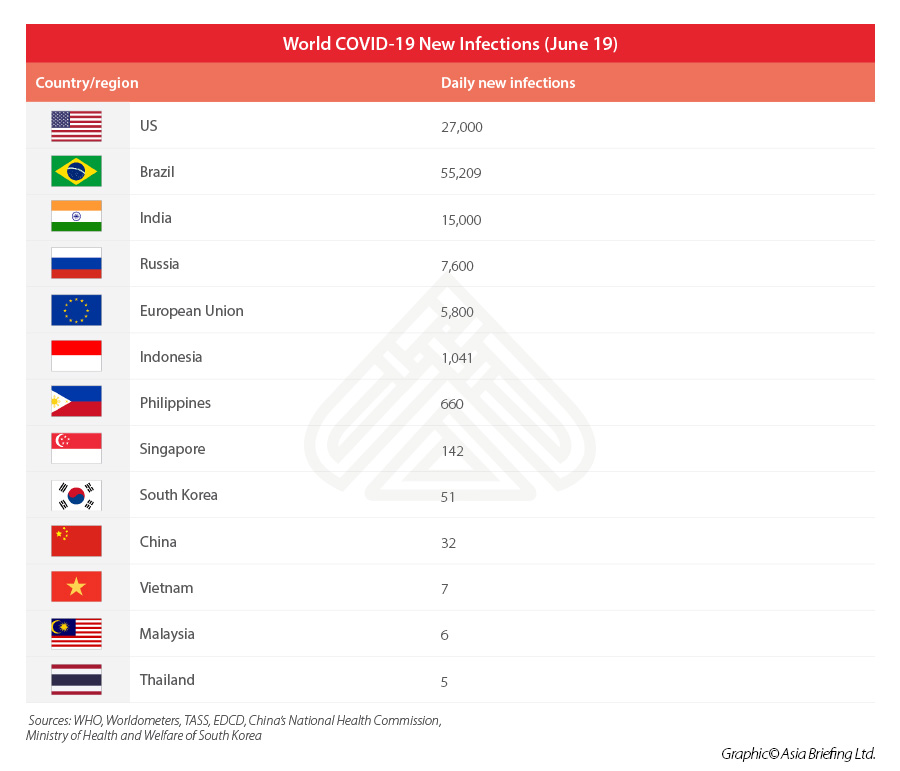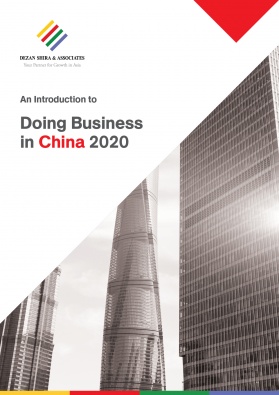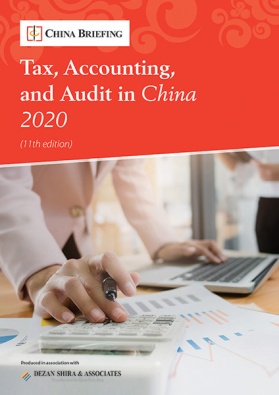There is no “post-COVID-19” era in China. There is only the COVID-19 era to adapt to.
Foreign investors in China and Asia need to prepare for a three-year period before COVID-19 is done.
Op/Ed by Chris Devonshire-Ellis
China-based and other international media commentators have frequently been using the term “Post COVID” in articles concerning trade and business operations in China, Asia, and globally, as if the coronavirus problem is going to somehow slip away. It isn’t.
At Dezan Shira & Associates, we have clients investing throughout China and Asia from over 90 countries worldwide. We also possess a significant research and editorial team who provide us with updates and indicators to how markets are developing – or not. In order for our firm to adapt and survive, we need to know how the domestic situation is in each of our client’s domiciles. There’s a lot of ground to cover, those of you who know our firm will recall how we’ve evolved from being a purely China practice to Asian, with offices in India and all of the major ASEAN economies. Nowadays, we also have numerous liaison offices throughout Europe, the US, South America, and along the Belt and Road. And we listen to them.
Unfortunately, what they are telling us is not great news. Just look at today’s media and it will tell you that China is experiencing a new outbreak, as are South Korea and New Zealand. All had previously been thought to have overcome a so-called ‘first wave’. Other countries, such as the US, Russia, India, and Brazil are experiencing increasingly high rates of new infections. In other areas, including the European Union, relatively considered safe, new infections are still getting confirmed at thousands a day. Yet, market watchers can take some respite in the difference in margins in the infections reported and the speed with which some countries have controlled fresh outbreaks. For example, in China, where there is a new cluster of infections in Beijing, numbers of new cases have come down (22 new cases as of the official update released on June 21; 9 cases as of June 22), suggesting a level of control. Moreover, Chinese health officials have also established a process of quick responses to manage and contain new outbreaks through mass testing, contact tracing, and quarantining at-risk zones with full-time monitoring. This prevents a large-scale spread.
The folly of opening up
These rising daily infection rates come at a time when economies, such as those in the EU and US are reopening for business, and home isolation is becoming less frequent. There will only be one outcome – a resurgence in infections. Populism and the overall mood of public opinion – frustrated by lockdowns and aided by the ultra-capitalism of opening economies at all costs, abetted by politicians seemingly unable to direct a coordinated response – will have serious infection consequences that will become apparent within the next three months. In such a scenario, what is exceedingly important is the manner in which these openings are achieved. Is the reopening of the economy a phased process or sudden change? Are the rules and compliance checks clear for businesses that have been allowed to operate and corporates allowed to have their workforce reporting to office? Are commercial establishments prone to crowds like restaurants and malls subject to clear and strict guidelines and monitoring? What is the level of cooperation in the society and preparation by health and safety officials? Assessing the information derived from asking these questions will indicate that some countries will be managing the opening up of their economies much better than others. That in turn will enable a greater level of market stability.
Air travel
It’s not safe. Aircraft have filters that can block out airborne viruses, but only after air has circulated around the cabin for ten minutes. Note the June 1 flight to Athens that took off from Qatar with 91 apparently healthy passengers revealed 17 cases of COVID-19 when checked upon arrival. All passengers and crew from the plane were quarantined for 14 days. There’s an insightful piece in the Financial Times about taking flights at this time here. Furthermore, it will be interesting to note how air travel is impacted from countries that are performing poorly in their management of COVID-19. As of now, China has agreed to allow international flights from select countries for urgent business, repatriation, and diplomatic travel, including from the US (where the COVID-19 numbers are very high), through a strict combination of bureaucratic checks and testing. However, if this movement of people inflate imported cases, it is not unthinkable that new travel restrictions get activated.
Seasonal variations
While warmer temperatures may diminish the effectiveness of COVID-19, it will not make it disappear. Hot countries such as Singapore and India have had serious problems with the coronavirus. While there may be some respite in the more Northern latitudes, there is no evidence nor experience to suggest it will die out during the summer months. As we learn more, the general understanding is that instead it is likely to return again when cooler weather starts in late autumn. Given that the annual influenza season typically begins in October, that is only three months from now. COVID-19 is not going to disappear in the next three months and it is a nailed-on certainty to return with some vengeance around the end of Q3.
Vaccinations
It seems possible that vaccinations to protect against COVID-19 will eventually become available. However, there are difficulties. It appears there are at least five different strains of COVID-19, and a workable vaccine will need to be able to deal with all of these – together with any other new strains that emerge. The real issue here is time. It appears that a vaccine fit for human use may not materialize until well into 2021 – meaning businesses need to adapt to a strong possibility of autumn / winter / spring outbreaks before anything is remotely ready. Then there are the logistics of getting a vaccine out there. With 7 billion people on the planet, that is going to be some supply chain demand to fulfill requirements. At least China, mainly in conjunction with its Belt and Road Initiative partners, seems to be putting infrastructure in place to permit this. There has been very little talk of alternative supply chain developments to vaccinate 7 billion people, let alone their own populations in most other countries and regions. I just don’t hear about any planning for this and that is a concern.
Consequences
It is imperative that businesses involved in global trade rapidly accept the need that the only possible outcome over the next two-three years is living in a COVID-affected world. The term “Post-COVID” is redundant and far too optimistic to carry any weight. Instead, right now it increases business risk as it implies things are about to get better. They are not.
All businesses must adapt to new business operating conditions, many of which we have spelled out in the pages of China Briefing:
- China Coronavirus – Latest Business Advisories (updated daily)
- Business Risk Management in China During COVID-19
- Recruiting in China During COVID-19: HR Planning for SMEs
- COVID-19: How Foreign Investors Can Leverage IT Solutions to Protect Their Businesses
- Which IT Systems to Deploy When Telecommuting in China
- Coordinating Your Remote Business Operations
What the last six months has taught us is that things can change rapidly. That can be a problem if planning travel – an outbreak somewhere can easily leave staff stranded. We have staff who are supposed to be working in our offices in Shanghai based from our offices in Moscow the past five months due to restrictions. It is not entirely comfortable when the trip was supposed to be for two weeks and personnel had packed accordingly. Others have been denied return to Singapore since March. Readers are probably aware of other cases. Such incidents are only likely to increase if outbreaks return – as they have.
The World Health Organisation, meanwhile, stated two days ago that the COVID-19 pandemic is accelerating, with a record 150,000 new cases recorded in a single day last Thursday (June 18). There is no chance of any “Post COVID” world anytime soon. Businesses must start to look longer term at what needs to be done to protect their employees and cashflow and adapt business operations to reflect this new dynamic. We will be living with COVID-19 all next year and way into 2022. Businesses and individuals need to prepare for a rather more problematic situation and get mentally and operationally prepared for the long haul until this is over.
Related Reading
-
- Fed Up with Covid-19? Here Are the China Plus One Alternatives
- How to Close a Business in China: Common Questions Asked
 Operating Your China Business During a Crisis and Contagious Disease Outbreaks
Operating Your China Business During a Crisis and Contagious Disease Outbreaks
We identify key concerns for business managers during infectious disease outbreaks, including managing a remote workforce, using IT solutions to navigate business operations more efficiently and securely, and addressing the legal risks in case contractual obligations are not satisfied.
About Us
Chris Devonshire-Ellis is the Founding Partner and Chairman of Dezan Shira & Associates. He ran the firm in China during SARS, H5N1, and numerous other incidents. The practice can assist businesses needing to adapt during the pandemic and provide IT services and administrative solutions in the HR, Payroll, Legal, Tax, and Accounting functions. Please contact the firm for assistance in China at china@dezshira.com.
- Previous Article Why Shanghai FTZ’s New Offshore Trade Policies Are Attracting Foreign Businesses
- Next Article Questões de Continuidade de Negócios Precisam ser Implementadas Agora







